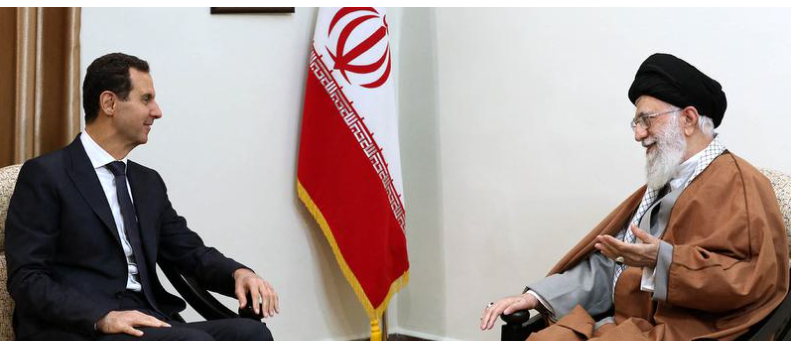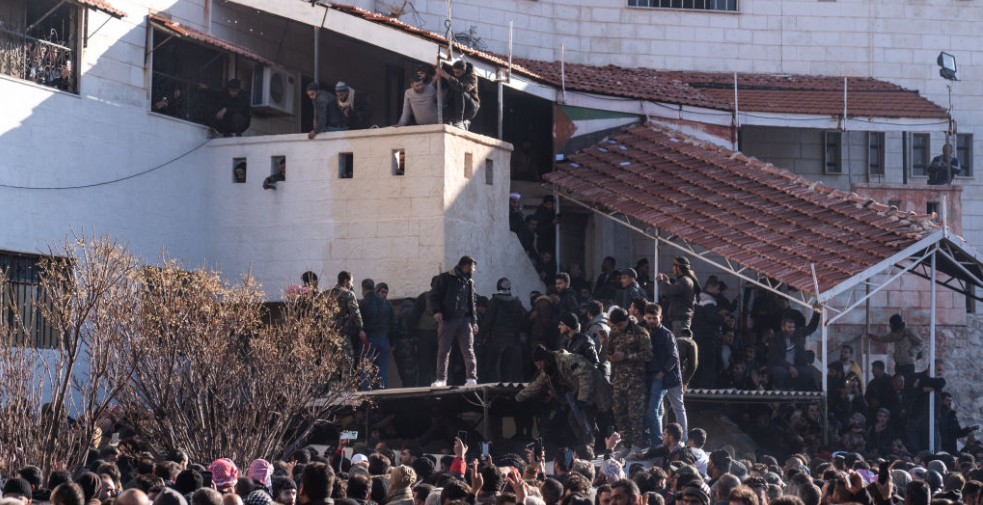Introduction
Islamist Forces ousting of Syrian President Bashar al-Assad marks a turning point in West Asian geopolitics. For over a decade, Assad was a linchpin in the alliance between Iran, Hezbollah, and other regional militia groups. His departure is a significant blow to Tehran’s strategy of maintaining a corridor of influence across Iraq, Syria, Islamist Forces and Lebanon. However, Assad’s exit also raises concerns about the resurgence of radical Islamist groups in Syria, threatening the fragile balance of power in the region.
This article explores the multifaceted implications of Assad’s removal, focusing on its impact on Iran’s regional influence, the potential rise of Islamist forces, and the broader geopolitical consequences for West Asia.
Assad’s Role in Iran’s Regional Strategy
The Tehran-Damascus Axis
Assad’s regime served as a critical ally for Iran, providing a strategic gateway to the Mediterranean and a conduit for supplying arms to Hezbollah in Lebanon. This alliance enabled Tehran to project power across West Asia, counterbalance Saudi Arabia, and challenge Israel.
Sustaining the ‘Axis of Resistance’
Iran’s “Axis of Resistance,” comprising Hezbollah, Iraqi militias, and Assad’s regime, was central to its strategy of countering U.S. and Israeli influence. The Syrian Civil War tested this axis, but Assad’s survival ensured Iran’s continued dominance in the region.  For the more information click on this link
For the more information click on this link
Iran’s Investments in Syria
Tehran heavily invested in Syria, providing military, financial, and logistical support to Assad. Iranian militias, including the Quds Force, played a key role in keeping Assad in power, Islamist Forces underscoring the importance of Syria to Iran’s geopolitical ambitions.
The Fallout of Assad’s Exit
Erosion of Iran’s Influence
The removal of Assad disrupts Iran’s regional strategy. Without a loyal ally in Damascus, Tehran’s ability to sustain its militia network across the region is significantly weakened. The loss of Syria also complicates Iran’s efforts to maintain a supply route to Hezbollah and other proxies.
Challenges in Filling the Void
Replacing Assad with a similarly compliant regime is unlikely. The power vacuum in Syria creates opportunities for rival powers, including Turkey, Saudi Arabia, Islamist Forces and the U.S., to expand their influence, further isolating Iran.
Rise of Islamist Forces in Post-Assad Syria
A Power Vacuum
Assad’s departure leaves a power vacuum in Syria, creating fertile ground for Islamist groups to gain traction. Groups such as Hayat Tahrir al-Sham and remnants of ISIS may exploit the chaos to reassert their influence.
Challenges of Governance
Islamist factions, while adept at guerrilla warfare, Islamist Forces lack the capacity to govern a fractured state like Syria effectively. Their rise could lead to prolonged instability, exacerbating the humanitarian crisis and threatening regional security.
Impact on Regional Stability
The resurgence of Islamist forces poses a threat not only to Syria but also to neighboring countries. Radical groups could use Syria as a base for launching attacks, Islamist Forces further destabilizing an already volatile region.
Implications for West Asia
Shift in Regional Dynamics
Assad’s exit signals a shift in West Asia’s geopolitical landscape. Iran’s diminished influence could embolden Saudi Arabia and other Sunni powers to assert themselves, intensifying sectarian rivalries.
Israel’s Strategic Calculations
Israel, a staunch opponent of Iranian influence in Syria, may view Assad’s removal as an opportunity to weaken Tehran further. However, the rise of Islamist forces presents new security challenges for Israel, complicating its strategic calculus.
Role of External Powers
The U.S., Russia, Islamist Forces and Turkey are likely to play key roles in shaping Syria’s future. Each has vested interests in the region, and their actions will significantly impact the balance of power in West Asia.
Iran’s Response to Assad’s Exit
Reassessing Strategy
Tehran will need to reassess its regional strategy in the wake of Assad’s removal. Strengthening ties with other allies, such as Iraq and Lebanon, may become a priority.
Bolstering Militia Networks
Iran is likely to double down on its support for militia groups to maintain its influence in the region. However, the absence of a stable ally in Syria complicates these efforts.
Engaging in Diplomacy
To counterbalance its losses, Islamist Forces Iran may seek to engage in diplomacy with rival powers. This could involve rapprochement with Turkey or even indirect talks with the U.S. and its allies.
Concerns Over Humanitarian Impact
Escalating Crisis
The political upheaval in Syria exacerbates an already dire humanitarian crisis. Millions of Syrians remain displaced, and the rise of Islamist forces could further hinder relief efforts.
Impact on Refugees
Neighboring countries, particularly Turkey and Lebanon, may face new waves of refugees, straining their resources and exacerbating domestic tensions.
International Aid Challenges
The chaotic situation in post-Assad Syria complicates the delivery of international aid. Ensuring the safety and effectiveness of humanitarian operations will be a significant challenge.
Expert Opinions on the Situation
On Iran’s Loss
Political analysts argue that Assad’s removal is a severe blow to Iran’s regional ambitions. “Without Assad, Iran loses a vital link in its chain of influence,” says a Middle East expert.
On the Rise of Islamists
Security analysts warn that the power vacuum in Syria creates opportunities for extremist groups. “The international community must act swiftly to prevent a resurgence of radical Islamist Forces ,” emphasizes a counterterrorism specialist.
On Regional Stability
Experts agree that Assad’s exit will reshape the geopolitical landscape. “This is a moment of both peril and opportunity for West Asia,” notes a regional affairs commentator.
Path Forward for the International Community
Preventing a Power Vacuum
The international community must work together to prevent Syria from descending into further chaos. Supporting inclusive governance and rebuilding efforts will be crucial.  For the more information click on this link
For the more information click on this link
Countering Extremism
Efforts to combat extremist groups must be prioritized. This includes strengthening local security forces and addressing the root causes of radicalization.
Engaging Regional Powers
Diplomatic engagement with regional powers, including Iran, Islamist Forces Turkey, and Saudi Arabia, is essential for stabilizing Syria and ensuring a peaceful transition of power.
Conclusion
The ousting of Bashar al-Assad marks a watershed moment for Syria and the wider region. While his removal weakens Iran’s influence in West Asia, it also raises the specter of renewed instability and the rise of Islamist forces.
Navigating this complex situation will require concerted efforts from regional and international actors. Only through cooperation and a commitment to peace can the region hope to overcome its challenges and build a more stable future. ALSO READ:-Tragedy in Haiti: Gang Leader’s Rampage Claims Lives of 184 Voodoo Practitioners 2024




